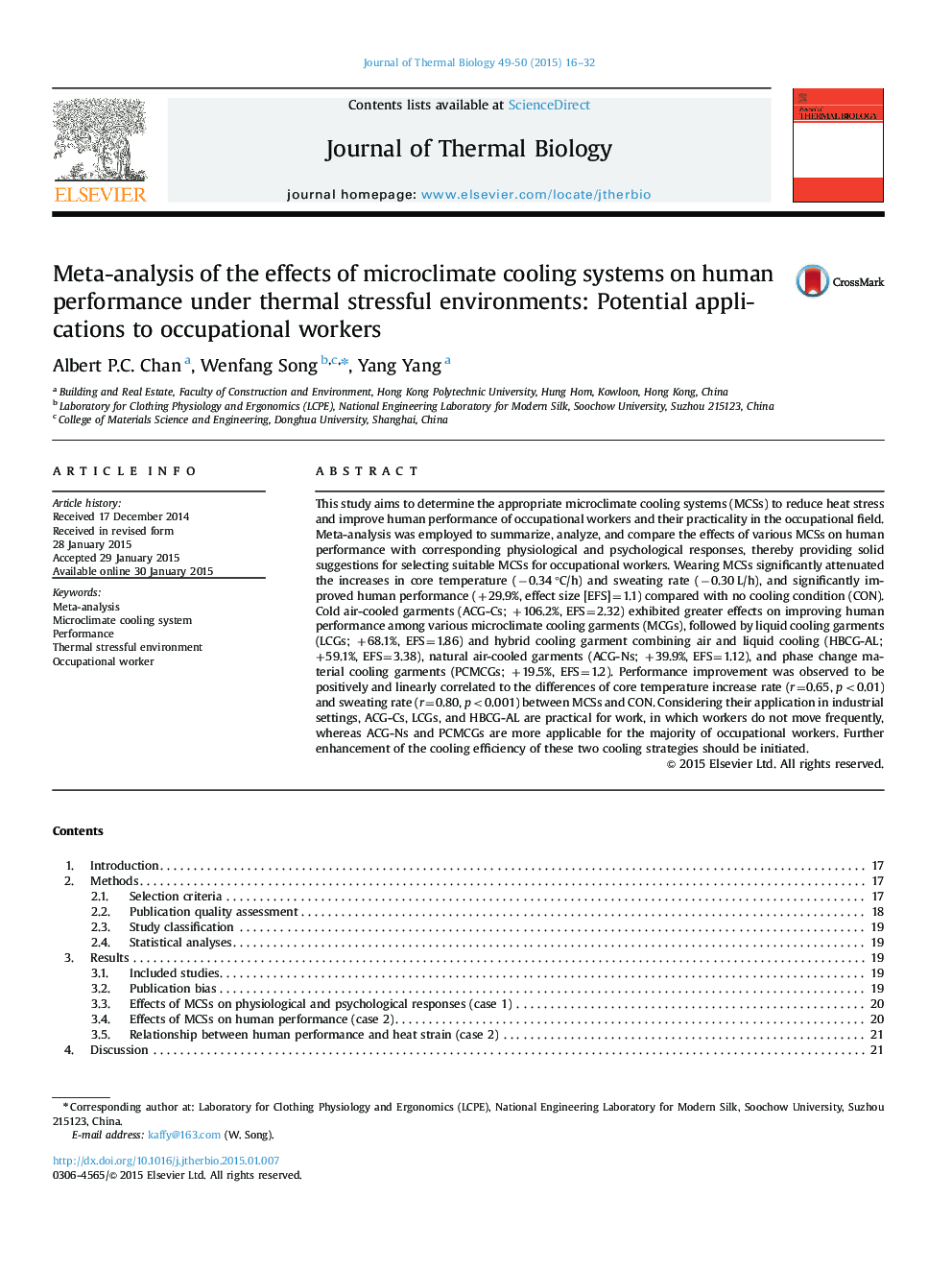| کد مقاله | کد نشریه | سال انتشار | مقاله انگلیسی | نسخه تمام متن |
|---|---|---|---|---|
| 2842752 | 1571096 | 2015 | 17 صفحه PDF | دانلود رایگان |
• Summarized, compared and analyzed various microclimate cooling systems (MCSs) on improving human performance.
• Adopted Meta-analysis method for the MCSs review.
• Analyzed potential application of MCSs for occupational workers.
This study aims to determine the appropriate microclimate cooling systems (MCSs) to reduce heat stress and improve human performance of occupational workers and their practicality in the occupational field. Meta-analysis was employed to summarize, analyze, and compare the effects of various MCSs on human performance with corresponding physiological and psychological responses, thereby providing solid suggestions for selecting suitable MCSs for occupational workers. Wearing MCSs significantly attenuated the increases in core temperature (−0.34 °C/h) and sweating rate (−0.30 L/h), and significantly improved human performance (+29.9%, effect size [EFS]=1.1) compared with no cooling condition (CON). Cold air-cooled garments (ACG-Cs; +106.2%, EFS=2.32) exhibited greater effects on improving human performance among various microclimate cooling garments (MCGs), followed by liquid cooling garments (LCGs; +68.1%, EFS=1.86) and hybrid cooling garment combining air and liquid cooling (HBCG-AL; +59.1%, EFS=3.38), natural air-cooled garments (ACG-Ns; +39.9%, EFS=1.12), and phase change material cooling garments (PCMCGs; +19.5%, EFS=1.2). Performance improvement was observed to be positively and linearly correlated to the differences of core temperature increase rate (r=0.65, p<0.01) and sweating rate (r=0.80, p<0.001) between MCSs and CON. Considering their application in industrial settings, ACG-Cs, LCGs, and HBCG-AL are practical for work, in which workers do not move frequently, whereas ACG-Ns and PCMCGs are more applicable for the majority of occupational workers. Further enhancement of the cooling efficiency of these two cooling strategies should be initiated.
Journal: Journal of Thermal Biology - Volumes 49–50, April–May 2015, Pages 16–32
